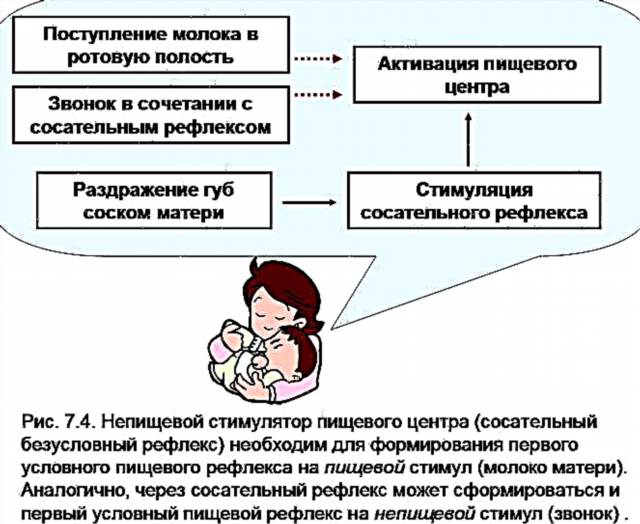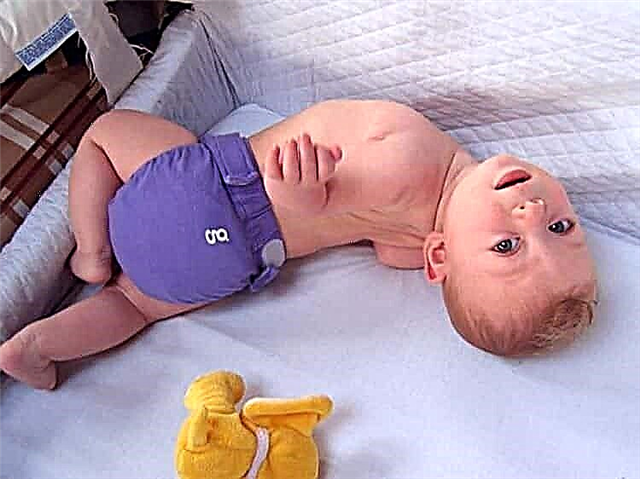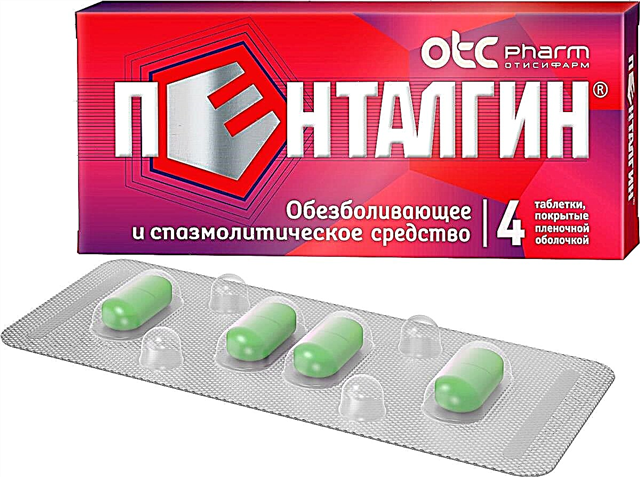The blue nasolabial triangle in a newborn baby is a very common occurrence, most often it is not dangerous for the baby's health. Mom and Dad must know that blue discoloration around the mouth in a newborn baby can be a symptom of disorders in the work of the heart, blood vessels and the respiratory system.

The newborn has a blue nasolabial triangle
Where is the nasolabial triangle
The part of the face, which is limited by folds on the sides of the nose and mouth, the mouth below and the nose above, is usually called the nasolabial triangle. In this place, the blood supply to the tissues is very well developed, since there are a large number of vessels and arteries.
The blue around the mouth of a baby in the 1st month after birth can be very noticeable when the baby is screaming too loudly for a very long time. In pediatrics, this condition is called pulmonary cyanosis, its occurrence is explained as follows: when a child screams, the oxygen levels in his blood begin to noticeably decrease, small capillaries become filled with blood during a period of strong tension, and they are very clearly visible through thin skin. This cyanosis disappears as soon as the baby stops crying.
To worry or not
Cyanosis near the nasolabial triangle in newborns is scientifically called acrocyanosis (peripheral cyanosis). It can be physiological or pathological. Most often, this diagnosis is observed in infants born prematurely, or in those whose birth took place with complications.
Causes
Blue around the mouth in a newborn baby is the norm, which is often provoked by difficult childbirth, which caused hypoxia or asphyxia.
Note! If the entire face of the baby constantly turns blue, or when the child is already a year old, you need to draw the doctor's attention to how the mother's pregnancy went, whether there were any delays in the development of the fetus, how was the birth process. If a newborn child has a heart pathology, or his parents have any concerns, you need to consult a doctor as soon as possible.
Not only their own peace of mind, but also the health of the baby depends on the attentiveness of the parents. Being attentive does not mean panicking at the sight of the crumbs turning blue around the mouth. You need to control such moments:
- Has the baby's breathing rhythm changed?
- Is there a strong cough;
- Is there a drowsy state and lethargy in the baby;
- It is also worth carefully examining other parts of the body, they should not look blue.

Blue around the mouth of a child
Physiological
Physiological causes are natural and are not a symptom of any disease.Cyanosis in an infant may appear due to the influence of such factors:
- Stress when sucking milk. When breastfeeding, a baby has to make a lot of effort to suck out all the milk, the vessels around the mouth expand significantly and become very noticeable under the delicate skin.
- Excessive emotional overexcitement and an overabundance of emotions. Excessive emotions always provoke constriction of blood vessels, as a result of which there is a decrease in oxygen concentration and a blue discoloration of the nasolabial fold.
- The effects of cold. If the parents do not comply with the recommended temperature regime, the child has an increased risk of vasospasm formation, as a result, cyanosis of the nasolabial region. If the crumbs turn blue around the entire mouth, this is the first sign that he is very cold. In addition to the face, the arms and legs may become bluish. If such changes were noticed during dressing or after water procedures, it is necessary to warm the baby. If the blue is gone, then everything is in order.
Important! Physiological blue discoloration of the nasolabial triangle passes rather quickly. If parents notice a change in skin color in other parts of the body, you should urgently seek medical help.

Newborn baby
Neurology
A blue triangle around the entire mouth of a newborn may appear due to difficult labor, when intracranial edema will be observed, as well as in case of insufficient development of the respiratory and neuro-autonomic brain center. In such cases of neurology, a noticeable suppression of the sucking reflex and blue eyelids will be visible.
The reason is pathology
Why does an infant turn blue around the mouth? There may be causes of a pathological nature: increased intracranial pressure, head trauma, diseases of the lungs and bronchi, pneumonia, congenital heart disease.

A baby with a blue face
What is cyanosis
Prolonged cyanosis of the skin, or cyanosis of the nasolabial triangle in an infant is a change in pigmentation of the skin around the mouth, under the nose and lower lip, sometimes there may be dark oval spots in the eye area.
The reason is an overestimated amount of converted hemoglobin in capillary blood or the presence of pathological hemoglobin. The skin and mucous membranes around the mouth and nose become darker. This is especially noticeable when the child has gone only a week from birth.

The child is crying, his nasolabial triangle turned blue
When a doctor is urgently needed
When it turns blue around the mouth of a nursing baby, which should alert parents:
- Blue suddenly appeared, the chin is shaking at the crumbs, hands and feet are trembling, the child has become anxious, does not laugh. This could be a symptom of a heart defect.
- The baby has a prolonged cold, accompanied by shortness of breath, wheezing, heavy breathing, pronounced cyanosis. This can signal the onset of pneumonia.
- The baby's skin turned white, there were loud wheezing, signs of suffocation, the area near the nose turned blue, it was hard for him to breathe.
What can be done
Recommendations:
- If the skin turns blue after bathing, or when the baby is cold, the child must be dressed, warmed, and the blue must pass;
- Observe at what time of the day the baby's nasolabial triangle turns blue;
- If the skin near the nose always remains blue, an urgent consultation with a pediatrician is necessary.
What Komarovsky says about the problem
A well-known doctor says that cyanosis around the mouth in a small child may appear due to the close location of the vessels, and also be a symptom of the development of heart pathology. The pediatrician advises to conduct an ultrasound of the baby's heart for his own reassurance.
Additional Information. The doctor states that all pregnant women during the period of bearing a baby should take care of themselves and the health of the baby. He advises eating a balanced diet article that will provide the growing fruit with all the vitamins and minerals it needs.
Prevention
The following rules will help prevent cyanosis of the nasolabial triangle in a nursing baby:
- Compliance with the correct diet by a nursing mother (with hepatitis B);
- Compliance with the daily routine;
- Long walks in the fresh air;
- Full day and night sleep, it is better if the child sleeps near an open window (in summer).
If a newborn child turns blue around the mouth, in most cases it is not dangerous for his health, but it can be a symptom of a serious pathology. Therefore, in case of any doubt about the health of the baby, parents should seek the advice of a pediatrician.



